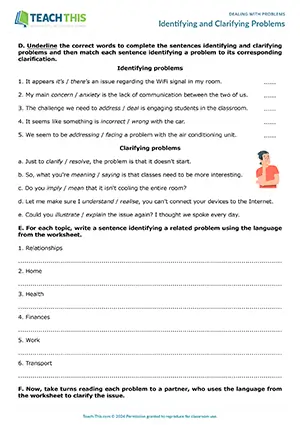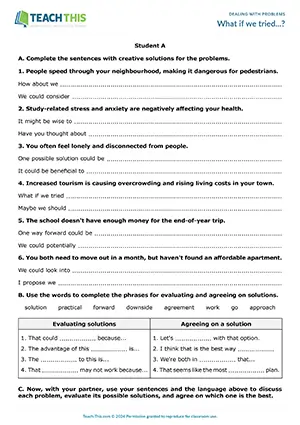Dealing with Problems ESL Activities, Worksheets & Games
Household Heroes

ESL Problems and Solutions Board Game - Speaking: Forming Sentences, Freer Practice - Group Work
In this engaging problem-solution board game, students practice identifying common household problems and suggesting appropriate solutions. To begin, students place their counters on the...
Identifying and Clarifying Problems

ESL Dealing with Problems Worksheet - Vocabulary and Writing Exercises: Gap-fill, Matching - Speaking Activities: Asking and Answering Questions - Pair Work
In this free dealing with problems worksheet, students practice common phrases for identifying and clarifying everyday problems. First, students discuss...
What if we tried...?

ESL Dealing with Problems Activity - Vocabulary and Speaking: Sentence Completion, Gap-fill, Discussion, Freer and Communicative Practice - Pair Work
Here is a dealing with problems speaking activity to help students practice language for suggesting, evaluating, and agreeing on solutions. First, in two groups...

